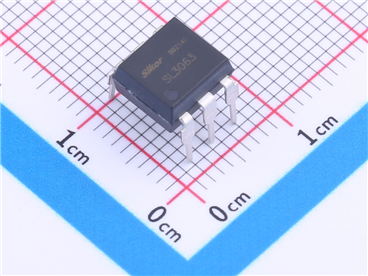Service hotline
+86 0755-83044319
release time:2022-03-14Author source:SlkorBrowse:7476
How to choose MOS correctly? What details should I pay attention to?
MOS by the majority of carriers involved in the conduction, also known as monopole transistor. It belongs to the voltage controlled semiconductor device, with high input resistance 10^7~10^12 ω), low noise, low power consumption, large dynamic range, easy integration, no secondary breakdown, wide safety work area and other advantages, has become a bipolar transistor and power transistor strong competitors.

1) N channel or P channel?
The first step in choosing a good MOS transistor device is to decide whether to use n-channel or P-channel MOSFETs. In typical power supply applications, when the MOSFET is grounded and the load is connected to the supply voltage, the MOSFET constitutes a low voltage side switch. In low-voltage side switches, an N-channel MOSFET should be used in consideration of the voltage required to turn off or on the device. When the MOSFET is connected to the bus and the load is grounded, a high voltage side switch is used. P-channel MOSFETs are usually used in this topology, again for the purpose of voltage drive.
2) Determine the rated current of the MOSFET
The rated current should be the maximum current the load can withstand under all conditions. Similar to the voltage case, even if the system generates peak current, ensure that the MOS transistor selected can withstand this rated current. The two current cases considered are continuous mode and pulse spike. In continuous on-mode, the MOS transistor is in a steady state and current continues to flow through the device. A pulse spike is when there is a large surge (or spike) of current flowing through the device. Once the maximum current under these conditions is determined, simply select the device that can withstand the maximum current.
3) The next step for MOSFET selection is the heat dissipation requirements of the system.
Two different scenarios, worst-case and true, must be considered. The worst-case calculation is recommended because it provides a greater margin of safety and guarantees that the system will not fail.
4) The last step of MOSFET selection is to determine the switching performance of MOSFET.
There are many parameters that affect switch performance, but the most important are gate/drain, gate/source, and drain/source capacitance. These capacitors cause switching losses in the device because they need to be charged each time they are switched on and off. Therefore, the switching speed of MOSFET decreases, and the device efficiency also decreases. In order to calculate the total loss of the device during switching, the loss during switching (Eon) and the loss during switching (Eoff) should be calculated.









Site Map | 萨科微 | 金航标 | Slkor | Kinghelm
RU | FR | DE | IT | ES | PT | JA | KO | AR | TR | TH | MS | VI | MG | FA | ZH-TW | HR | BG | SD| GD | SN | SM | PS | LB | KY | KU | HAW | CO | AM | UZ | TG | SU | ST | ML | KK | NY | ZU | YO | TE | TA | SO| PA| NE | MN | MI | LA | LO | KM | KN
| JW | IG | HMN | HA | EO | CEB | BS | BN | UR | HT | KA | EU | AZ | HY | YI |MK | IS | BE | CY | GA | SW | SV | AF | FA | TR | TH | MT | HU | GL | ET | NL | DA | CS | FI | EL | HI | NO | PL | RO | CA | TL | IW | LV | ID | LT | SR | SQ | SL | UK
Copyright ©2015-2025 Shenzhen Slkor Micro Semicon Co., Ltd